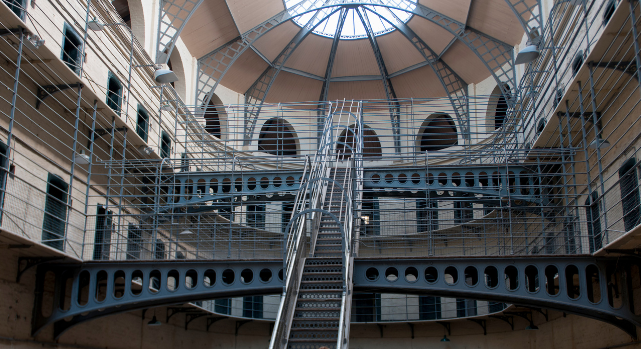Uncover the Ancient Mysteries of the Rock of Cashel
Introduction
The Rock of Cashel, also known as St. Patrick’s Rock, is one of Ireland’s most spectacular and historically significant sites. Perched on a limestone hilltop in County Tipperary, this majestic complex of medieval buildings offers visitors a glimpse into Ireland’s rich heritage, blending religious, cultural, and political history. The Rock of Cashel is not just a destination for history buffs but a must-see landmark for anyone exploring the heart of Ireland.
A Journey Through History
The Rock of Cashel has a history that stretches back over a thousand years. According to legend, the site was originally the seat of the Kings of Munster, a powerful kingdom in ancient Ireland. It is said that St. Patrick himself visited the Rock in the 5th century, converting the local king to Christianity. In the 12th century, the site was gifted to the Church and became an important ecclesiastical center.
Today, the Rock of Cashel is a striking collection of medieval structures, including a round tower, a high cross, a Romanesque chapel, and a Gothic cathedral. Each of these buildings tells a story of Ireland’s past, from its pagan roots to its Christian heritage.
What to See at the Rock of Cashel
Visitors to the Rock of Cashel are greeted by an array of awe-inspiring buildings and artifacts, each with its own unique history and architectural significance. Here’s what you can expect to explore:
- The Round Tower: Dating back to the 11th or 12th century, the 28-meter (92-foot) tall round tower is one of the oldest and most impressive structures on the site. It was likely used as a bell tower and a place of refuge during attacks. The tower’s enduring presence serves as a reminder of the site’s ancient origins.
- Cormac’s Chapel: Built between 1127 and 1134, Cormac’s Chapel is a stunning example of Romanesque architecture. The chapel features intricate stone carvings, an ornately decorated interior, and the oldest surviving frescoes in Ireland. This small yet exquisite chapel is a highlight of any visit to the Rock of Cashel.
- The Cathedral: The large Gothic cathedral, constructed in the 13th century, dominates the site with its imposing presence. Although roofless today, the cathedral’s soaring walls and grand arches convey the power and influence the church once held in medieval Ireland.
- The Hall of the Vicars Choral: This 15th-century building was once the residence of the Vicars Choral, a group of clerics who sang during religious services. Today, it houses a small museum with a collection of medieval artifacts, including ancient manuscripts and religious relics.
- The High Cross and Graveyard: The Rock of Cashel is also home to a historic graveyard filled with ancient tombstones and high crosses. The most famous is the Scully’s Cross, a striking Celtic cross that overlooks the surrounding countryside. The graveyard offers a peaceful place for reflection and provides panoramic views of the surrounding landscape.
Why Visit the Rock of Cashel?
The Rock of Cashel is more than just a historical site; it’s a symbol of Ireland’s enduring spirit and rich cultural heritage. Whether you’re captivated by ancient architecture, intrigued by Irish legends, or simply looking for a breathtaking view, the Rock of Cashel delivers an unforgettable experience. It’s a place where history comes alive, offering visitors the chance to step back in time and explore the stories of Ireland’s past.
Practical Information
- Location: The Rock of Cashel is located in County Tipperary, approximately 1.5 hours by car from Cork and 2 hours from Dublin.
- Opening Hours: The site is open year-round, with extended hours during the summer months. It is recommended to check the official website for the most up-to-date information on opening times and ticket prices.
- Tickets: Admission tickets can be purchased at the entrance or online in advance. Guided tours are available and offer a deeper understanding of the site’s history and significance.
- Accessibility: Due to the historic nature of the site, some areas may be difficult to access for visitors with mobility issues. However, the main parts of the site, including the visitor center, are accessible.
Tips for Visiting
- Plan Your Visit: To make the most of your time, consider visiting early in the morning or later in the afternoon to avoid the busiest crowds.
- Weather Preparedness: As the Rock of Cashel is an outdoor site, be prepared for changing weather conditions. Wear comfortable walking shoes and bring a rain jacket, especially if you plan to explore the grounds and surrounding areas.
- Photography: The Rock of Cashel offers countless photo opportunities, from the detailed stone carvings to the sweeping views of the Irish countryside. Don’t forget your camera!
Conclusion
The Rock of Cashel stands as a testament to Ireland’s rich history and enduring culture. A visit to this iconic site is more than just a tour of ancient ruins; it’s a journey through time, offering a deeper understanding of Ireland’s past and its people. Whether you’re a seasoned traveler or a first-time visitor to Ireland, the Rock of Cashel is an essential stop on your itinerary, promising a memorable and enriching experience.




